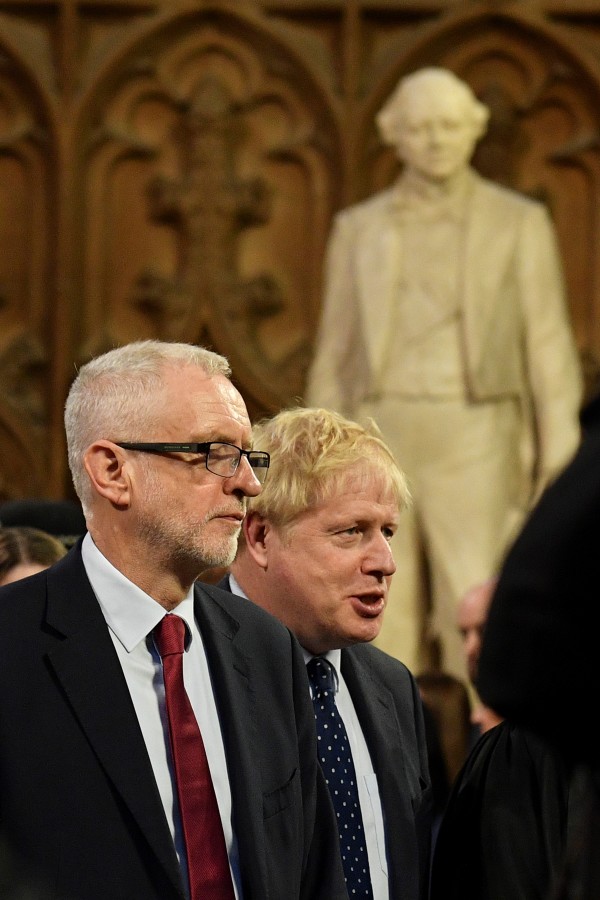

As the December 12 elections draw closer, voters are trying to make sense of how the different parties’ manifesto pledges could affect their finances.
The Conservative party wants to raise the national insurance threshold to £9,500 next year from £8,632, with a future aspiration to moving the threshold to £12,500.
Laura Suter, a personal finance analyst at AJ Bell, says: “Despite Boris Johnson previously pledging the £2.5bn plan would save taxpayers £500 a year, this initial move will save between £85 and £100, depending on whose estimates you believe.
“By shifting national insurance rates, rather than income tax thresholds, Mr Johnson extends the giveaway to the lowest earners.”
Labour wants to increase the number of people paying the 45 per cent income tax rate, cutting the threshold from £150,000 to £80,000, and introducing a new 50 per cent rate for those earning more than £125,000.
Key Points
- All the main political parties have released their manifestos
- Labour wants to raise personal taxes
- Neither Labour nor Conservatives are grappling in enough detail with the tapered annual allowance or social care
Labour also wants to bring the tax on gains from investments in line with income tax – a move estimated to raise £14bn.
Ms Suter says: “The move to crack down on dividends will hit business owners who pay themselves this way, and investors, with the capital gains tax allowance being slashed from £12,000 to £1,000, which will cost up to £4,400 a year for those earning £50,000 or more.”
Net pay
A lot has been said of the gender pensions gap, where women are at a disadvantage compared to men because of a loophole affecting people with net pay pension schemes.
This is where an employee’s pension contribution is taken from their pay, before tax is applied, so they only pay tax on what is left. Basic, higher and additional taxpayers automatically save 20, 40 and 45 per cent respectively in tax relief. However, any employees earning less than £12,500 a year will not get relief because they do not earn enough to pay tax.
Rachael Griffin, tax and financial planning expert at Quilter, says: “The Conservatives have pledged to end a tax flaw that means that the lowest earning workers, the vast majority of whom are women, miss out on £8,000 in pension savings over the course of their working life. The issue needs to be addressed sooner rather than later.”
Ros Altmann, former pensions minister, says: “This is not just an ‘anomaly’; is it a significant injustice.”
More than 1m workers are being charged an extra 25 per cent for their auto-enrolment pension.
For higher paid workers, the Conservative and Labour parties have laid out plans to tackle the tapered annual allowance issue, a problem particularly highlighted as affecting senior doctors.
The pension annual allowance is the annual limit on the amount of contributions paid to, or benefits accrued in, a pension scheme before the member has to pay tax.
On April 6 2016 the government introduced the tapered annual allowance for individuals with threshold income of over £110,000 and adjusted income of over £150,000.
For 2019-20 the government has pledged to make good any tax charges through higher pension benefits.
Tom Selby, senior analyst at AJ Bell, says: “This feels like sticking a plaster to cover an arterial wound, and a much simpler solution would be to just scrap the taper altogether. Not only would this deal with a major strain on the NHS but also drastically simplify the pension tax regime for all workers.”
Labour has promised to review pension tax incentives, with a focus on the problems facing the NHS as thousands of doctors refuse shifts due to the impact of the taper.
Mr Selby adds: “While scrapping the taper might be politically uncomfortable for Labour, it remains the simplest solution to the current crisis. It is possible Labour’s review will go much wider than the taper.
“The party’s [45 per cent tax proposal] is clearly designed to clobber higher earners – but it also has an impact on pension tax incentives.
“Because pension tax relief is paid at an individual’s marginal rate, this reform will hand a bigger pension tax boost to those on the highest incomes. It is hard to imagine this is the intention of the most left wing Labour party in a generation.
“It therefore seems an almost racing certainty that, if Labour wins power and this policy is introduced, pension tax relief will be subject to yet more reform.”
Mr Selby says the next government needs to take a longer-term view of pension tax relief and build a simpler framework.
Ms Griffin says: “Mr Johnson’s Tory party appear to refuse to accept that the taper is not fit for purpose and should be scrapped, instead choosing to look for short-term, bespoke fixes for the NHS.”
State pension for women
While the Liberal Democrats’ manifesto does not include an overhaul to the pension tax relief system, it does include a commitment to ensure that women born in the 1950s who have had to wait longer for their pension get compensation.
Labour and the Conservatives have also pledged their own remedies.
The social care funding crisis is another big issue, but retirement specialists say it is missing in some detail from the manifestos.
In England, anyone with assets worth £23,250 or more is responsible for all of their care costs, with no cap, unless certain close relatives are still in the property.
If the asset is under £23,250 the individual qualifies for means-tested assistance from their local authority.
An exception on self-funding care is where someone needs care due to certain medical conditions or illnesses, and in this case the NHS will pay for care under “continuing healthcare”, with eligibility determined by the local authority.
Steven Cameron, pensions director at Aegon, says: “Social care funding is one of our society’s greatest challenges and increased life expectancy and the rising costs of providing care mean this is an issue that will just keep getting bigger unless tackled in a fair, transparent and sustainable way.”
The Conservatives have promised that people will not have to sell their home to pay for care with a pledge in additional funding of £1bn, in every year.
Labour says it wants to provide free personal care across England and promises to place a lifetime cap of £100,000 on how much an individual will need to pay towards care costs.
However, Mr Cameron says there is not enough detail on a long-term sustainable plan.
Steve Webb, director of policy at Royal London and former pensions minister, adds: “The key problem is that none of us know whether our later life care costs will be nil, or at least easily affordable, or whether they will be astronomical.
“This makes it very difficult to plan ahead or to save the ‘right’ amount. Ideally we need an ‘insurance’ solution, where we can all pool our risk of facing these catastrophic care costs.”
The Lib Dems are also promising a cap on how much an individual has to pay – a move it claims will raise an additional £7bn.
Ms Suter adds: “There has long been a talk of a care cap, which is setting a maximum amount that each individual will have to pay for care before the government steps in and foots the bill.
“However, no government has managed to grasp this thorny issue and come up with a solution that is politically appealing.”
Ima Jackson-Obot is deputy features editor of Financial Adviser and FTAdviser



